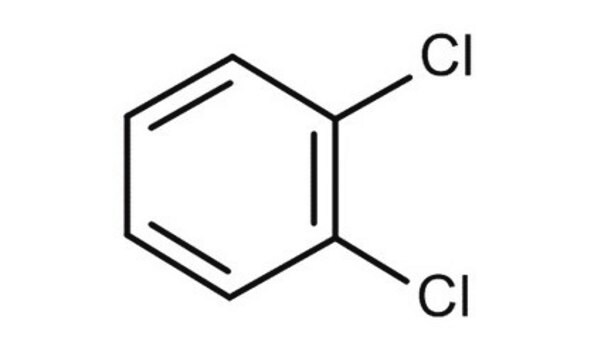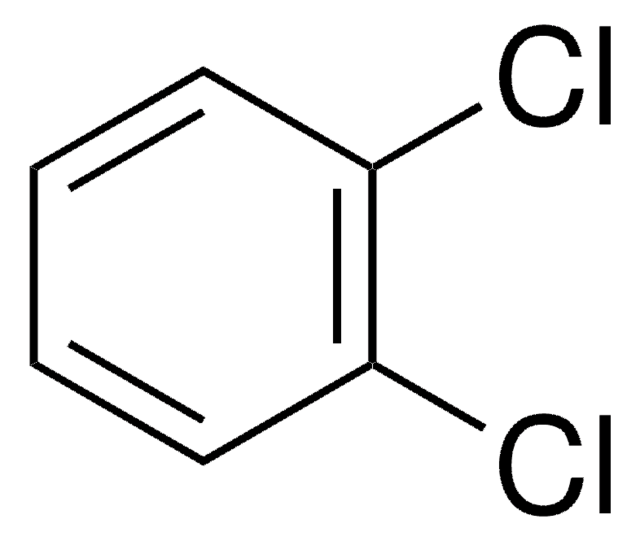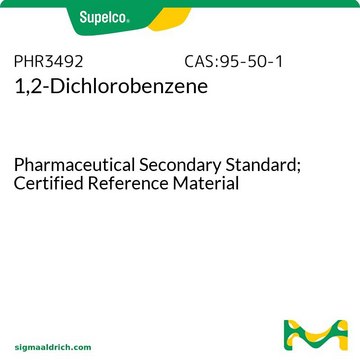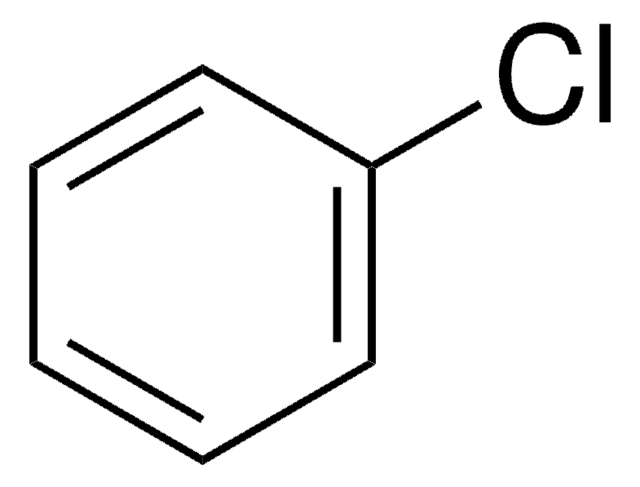D56802
1,2-Dichlorbenzol
ReagentPlus®, 99%
About This Item
Empfohlene Produkte
Dampfdichte
5.1 (vs air)
Qualitätsniveau
Dampfdruck
1.2 mmHg ( 20 °C)
1.6 mmHg ( 35 °C)
Produktlinie
ReagentPlus®
Assay
99%
Form
liquid
Selbstzündungstemp.
1198 °F
Expl.-Gr.
9.2 %
Brechungsindex
n20/D 1.551 (lit.)
bp
178-180 °C (lit.)
mp (Schmelzpunkt)
−18-−17 °C (lit.)
Dichte
1.306 g/mL at 25 °C (lit.)
SMILES String
Clc1ccccc1Cl
InChI
1S/C6H4Cl2/c7-5-3-1-2-4-6(5)8/h1-4H
InChIKey
RFFLAFLAYFXFSW-UHFFFAOYSA-N
Suchen Sie nach ähnlichen Produkten? Aufrufen Leitfaden zum Produktvergleich
Anwendung
- In the Wohl-Ziegler bromination of methoxyimino-o-tolyl-acetic acid methyl esters.
- To synthesize poly(butyleneterephthalate) copolyesters via polycondensation.
Rechtliche Hinweise
Signalwort
Warning
Gefahreneinstufungen
Acute Tox. 4 Inhalation - Acute Tox. 4 Oral - Aquatic Acute 1 - Aquatic Chronic 1 - Eye Irrit. 2 - Skin Irrit. 2 - Skin Sens. 1B - STOT SE 3
Zielorgane
Respiratory system
Lagerklassenschlüssel
6.1C - Combustible acute toxic Cat.3 / toxic compounds or compounds which causing chronic effects
WGK
WGK 2
Flammpunkt (°F)
150.8 °F - closed cup
Flammpunkt (°C)
66.0 °C - closed cup
Analysenzertifikate (COA)
Suchen Sie nach Analysenzertifikate (COA), indem Sie die Lot-/Chargennummer des Produkts eingeben. Lot- und Chargennummern sind auf dem Produktetikett hinter den Wörtern ‘Lot’ oder ‘Batch’ (Lot oder Charge) zu finden.
Besitzen Sie dieses Produkt bereits?
In der Dokumentenbibliothek finden Sie die Dokumentation zu den Produkten, die Sie kürzlich erworben haben.
Kunden haben sich ebenfalls angesehen
Unser Team von Wissenschaftlern verfügt über Erfahrung in allen Forschungsbereichen einschließlich Life Science, Materialwissenschaften, chemischer Synthese, Chromatographie, Analytik und vielen mehr..
Setzen Sie sich mit dem technischen Dienst in Verbindung.











